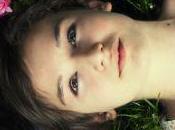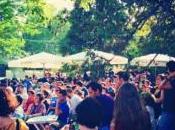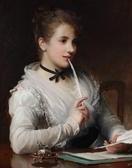Edificata nel 1605 per Sir Walter Cope
ed originariamente nota come Cope Castle,
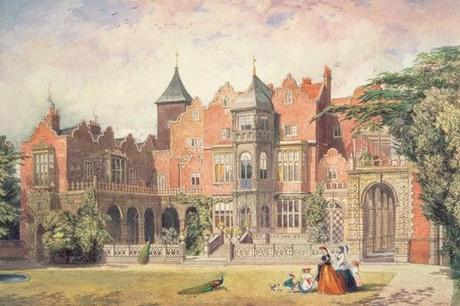
Holland House by John Wykeham Archer (1808 - 1864)
Holland House fu una delle prime grandi residenze costruite a Londra presso Kensington, per l'esattezza a due miglia dall'angolo di Hyde Park, alla fine di Kensington Road; alla morte di Cope l'edificio venne ereditato da suo cognato Henry Rich, I conte di Holland ed i suoi discendenti ne detennero la proprietà fino all'epoca vittoriana inoltrata.
Sotto Henry Richard Vassall-Fox, 3rd Baron Holland PC (1773 – 1840 ), figura politica di spicco del movimento Whig, agli inizi del XIX secolo, la residenza divenne nota quale salotto letterario e politico di alto livello frequentato da personaggi eminenti dell'epoca, scrittori, letterati, filosofi, politici di stampo progressista quali George Byron, Thomas Macaulay, Benjamin Disraeli, Charles Dickens, Walter Scott, Ugo Foscolo, Sydney Smith e lo storico e politico John Allen cui ancor oggi una delle stanze è dedicata; Holland House fu frequentata anche in epoca vittoriana, quando fu promossa quale centro artistico di grande importanza, basti pensare che George Frederic Watts stabilì qui il proprio studio: dopo un contratto di ventun'anni che lo vedeva dipingere le proprie tele nella residenza principale, egli decise di farsi costruire un'ala chiamata Little Holland House,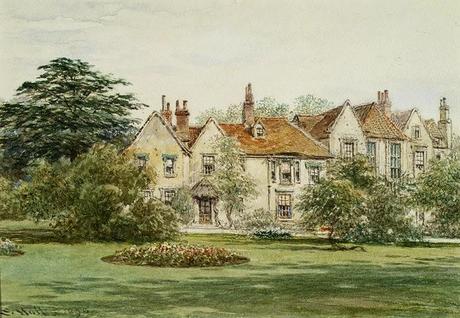
sempre all'interno di Holland Park, che divenne una sorta di casa-studio, fulcro della vita artistica londinese frequentato anche da Julia Margaret Cameron e da una nutrita quantità di altri luminari vittoriani. Purtroppo, dopo il bombardamento subito nel 1940 ben poco rimane di tale splendore, ovvero solo il piano terreno che, ripristinato, oggi è utilizzato quale ostello.
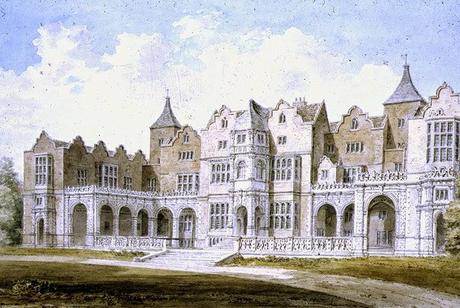
Holland House by John Buckler, 1812
Ma noi siamo in grado, con gli occhi della mente, aiutati da autentiche immagini del tempo, di tornare agli inizi del 1800, quando Holland House, dalle tipiche linee architettoniche, fatte dell'alternarsi di simmetrie e dai giochi di rientranze e sporgenze tipicamente dettate dallo stile Giacobino, era ancora totalmente immersa nel verde della campagna, circondata da boschi di secolari latifoglie e da ampie praterie;
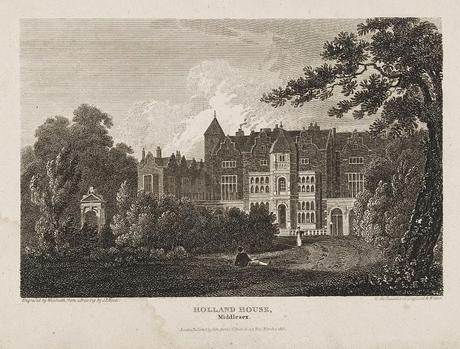
Holland House by John Preston Neal, 1815, ( Victoria & Albert Museum )
qui Lord Holland e sua moglie Lady Vassall-Holland crearono un salotto scintillante ed influente degno della fama che conquistò, poiché per oltre 30 anni, prima della Reform Act datata 1832, Holland House divenne il quartier generale del partito Whig, il luogo in cui gli uomini nuovi si incontravano, cenavano e discutevano;
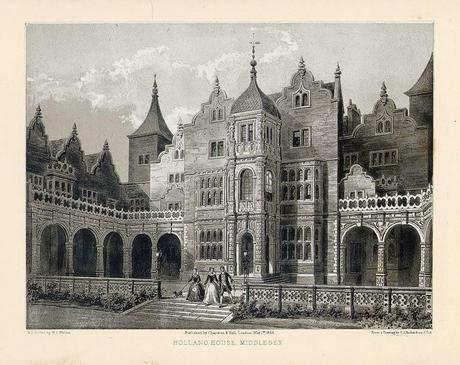
Lithotint by William L.Walton (1796 - 1872)
come già detto Byron era uno degli ospiti prediletti e fu qui che egli incontrò e conobbe Lady Caroline Lamb, così come ospite fisso era Sidney Smith, conosciuto come spirito libero dell'epoca e Richard Brinsley Sheridan che lasciava Holland House spesso in preda ai fumi dell'alcool.
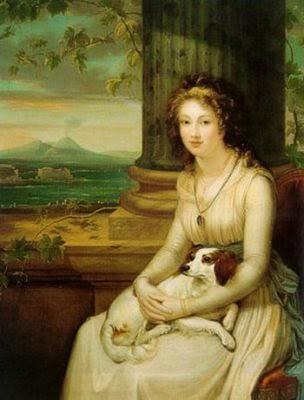
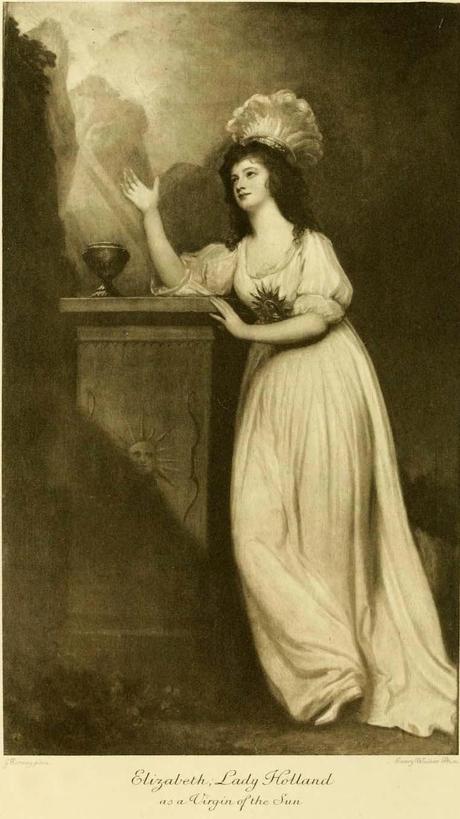
Lady Elizabeth Vassal Webster nei panni de "A Virgin of the Sun" by George Romney, c.1793
egli aveva vent'anni e si trovava come Lady Webster, fuggita a causa della violenza che il marito su di lei riversava, in Italia per il tradizionale Grand Tour.
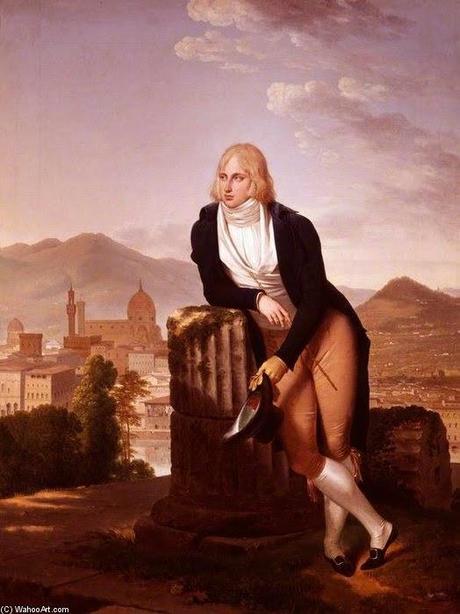

Lady Elizabeth Webster, 1795, by Louis Gauffier
"ebbe la sua posizione come signora di una splendida casa, suo marito, vivace ed esuberante, era un padrone incantevole, e lei stessa, nel pieno splendore della sua giovinezza e della sua bellezza, poté ancora una volta esercitare le sue abilità. Insieme hanno fatto di Holland House una calamita per i politici ancora attaccati alla norma ormai mal ridotta di Fox, in numero limitato, ma che diedero con il loto talento ciò che mancava in quanto a voti."1
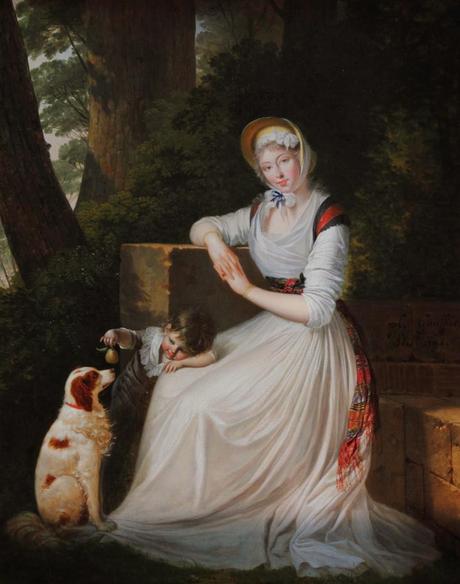
Lady Holland (con il figlio Godfrey Vassall) nel 1796 by Louis Gauffier
Nell'allestire i sontuosi ricevimenti che di tale dimora fecero la fama era sovente aiutata dall'amica Georgiana Cavendish, Duchessa del Devonshire, ospite fissa ed altra frequente presenza femminile, il cui nome era facilmente legato a quello dei più rinomati salotti culturali del tempo poiché era una figura di spicco nel dibattito preromantico - a lei si dovrà la nascita del romanticismo - ( anche se non godeva di altrettanta simpatia da parte della padrona di casa ) era Madame de Staël e spesso figurava ospite alle cene che si tenevano ad Holland House anche Charles Maurice de Talleyrand-PérigordLa magnificenza della residenza e quanto di fastoso e principesco offrivano il parco ed i giardini di Holland House,
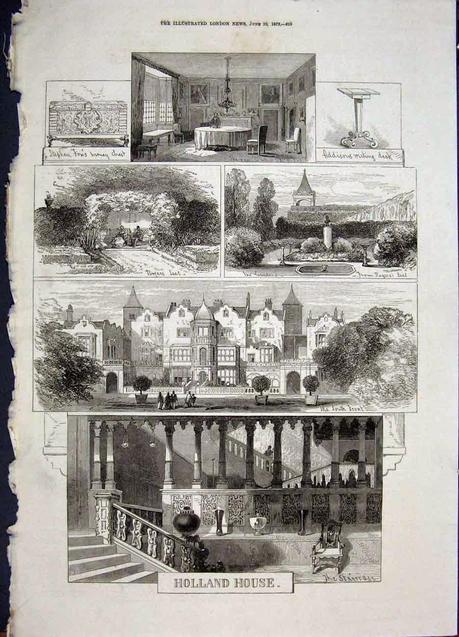
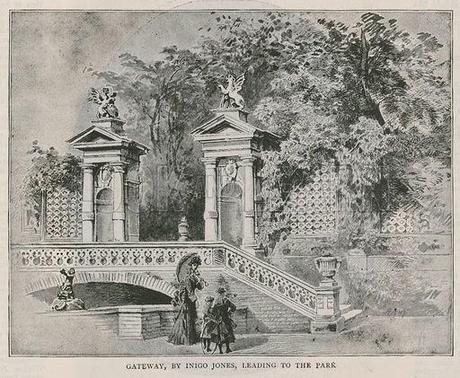
seppure ben apprezzati da Lady Elizabeth, la quale contribuì a renderli altresì più preziosi importando in Gran Bretagna il fiore della dalia alla quale legò indissolubilmente il suo nome, passarono in secondo piano rispetto agli intrattenimenti di cui essa era protagonista, come si evince anche dal suo diario. A tale proposito ci tengo a dirvi che un tentativo d'importazione del suddetto fiore era stato fatto nel 1789 dalla Marchesa di Bute, che recò la pianta dalla Spagna, ma non riuscì a propagarla. Nel 1804 Lady Holland si trovava a Madrid e ricevette dal botanico Antonio José Cavanilles i semi che ella subito inviò in Inghilterra, al signor Buonaiuti, bibliotecario di Lord Holland ad Holland House, il quale riuscì a crescerne con successo le piante; nel 1824 Lord Holland inviò alla moglie un biglietto contenente la seguente poesiola:
" La dalia che tu portasti alla nostra isolaLe tue lodi per sempre canterà;Il cuore dei giardini sarà dolce come il tuo sorriso,E di un colore luminoso come la tua gota. "

Henry Richard Fox Vassall 3rd Baron Holland nel 1820, by George Hayter
Si dice che con il passare del tempo Lady Holland abbia maturato un carattere irritante, altezzoso, ed una lingua tagliente, tanto, forse, da giustificare l'allontanarsi di parte dei suoi figli per raggiungere l'estero, ma i suoi salotti furono sempre e comunque frequentati e fu sempre avvolta dall'amore di un marito devoto che in occasione del proprio sessantesimo compleanno ebbe a dire:
I loved you much at twenty-four, I love you better at three score /
Ti ho amato tanto quando avevi 24 anni, ti amo di più ora che ne hai il triplo
Quando nel 1845 Lady Elizabeth si spense, Charles Greville, nelle sue memorie annotò che con Lady Holland scomparve "una luce sociale che illuminò ed adornò l'Inghilterra, e l'Europa, per mezzo secolo"
❦
Ebbene, dovendo ormai concludere, mi viene da pensare che, approfondendo, ricercando, leggendo e studiando, sempre più numerosi emergono dal passato esempi di personalità più o meno facoltose, dai nomi a noi più o meno noti, che in più modi si sono adoperati per migliorare le condizioni di vita del tempo in cui hanno vissuto, e sono riusciti, se non completamente, almeno in parte nei loro intenti, in modo imperituro, tanto che spesso ancor oggi noi ci gioviamo di cotali risultati e non posso fare a meno di domandarmi se anche in merito a questo dobbiamo nutrire nostalgia per i tempi trascorsi ...
Vi giunga colmo di gratitudine ed affetto il mio più caloroso abbraccio, miei carissimi amici e lettori.
A presto ♥
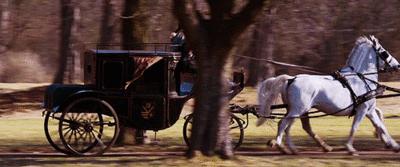

Bibliografia:
Catherine Horwood, Gardening Women: Their Stories from 1600 to the Present, Virago Press Ltd, 2010
Linda Kelly, Holland House: A History of London's Most Celebrated Salon, I. B. Tauris, 2013
Citazioni:
1 - Linda Kelly, Holland House: A History of London's Most Celebrated Salon, I. B. Tauris, 2013, pag. 24

Built in 1605 for Sir Walter Cope
and originally known as Cope Castle,
- picture 1 - Holland House by John Wykeham Archer (1808 - 1864)Holland House was one of the first large residences built in London at Kensington, exactly two miles from the corner of Hyde Park, at the end of Kensington Road; the death of Cope, the building was inherited by his brother Henry Rich, the Count of Holland and his descendants held the property until the forwarded Victorian era.
With Henry Richard Vassall-Fox, 3rd Baron Holland PC (1773-1840), prominent political figure of the Whig movement, in the early nineteenth century, the residence became known as a literary and political salon of a high-level frequented by eminent names of the era, writers, scholars, philosophers, politicians of progressive mold such as George Byron, Thomas Macaulay, Benjamin Disraeli, Charles Dickens, Walter Scott, Ugo Foscolo, Sydney Smith, and the historian and politician John Allen to whom even today one of the rooms is dedicated; Holland House was also frequented in the Victorian era, when it was promoted as an artistic center of great importance, considering that George Frederic Watts settled his study there: after a twenty-one years contract which saw him painting his canvases in the main residence, he decided to build himself a wing called Little Holland House,- picture 2 - Little Holland House in the 1860salways in Holland Park, which became a sort of home-study, center of the artistic life in London frequented by Julia Margaret Cameron and by a large amount of other Victorians luminaries.Unfortunately, soon after the bombing in 1940, very little has remained of that splendor, actually only the ground floor, which, restored, is nowadays used as a hostel.- picture 3 - Holland House by John Buckler, 1812But we are able, with the eyes of our mind, helped by authentic images of that time, to come back to the early 1800s, when Holland House, with the typical architectural lines, made of the alternation of symmetries and from the games of indentations and protrusions typically dictated by the Jacobean style, was still totally immersed in the countryside, surrounded by forests of deciduous trees and large meadows;- picture 4 - Holland House by John Preston Neal, 1815, ( Victoria & Albert Museum )here Lord Holland and his wife Lady Vassall-Holland created a glittering and influential lounge worthy of the fame that it conquered, because for over 30 years, before the Reform Act dated 1832, Holland House became the headquarters of the Whig political party, the place where the new men met, dined and discussed;- picture 5 - Lithotint by William L.Walton (1796 - 1872)as said Byron was one of the favorite guests, and it was here that he met and became acquainted with Lady Caroline Lamb, as well as a permanent guest was Sidney Smith, known as the free spirit of the time and Richard Brinsley Sheridan who often left Holland House far too drunk.- picture 6 on the left - Elizabeth Vassall as Lady Webster, by Robert Fagan, 1793 -At the time, Lady Elizabeth Vassall - born in London in 1771 as the only child of Richard Vassal, owner of sugar plantations in Jamaica and other parts situated in the East Indies, and Mary Clarke - already become Baroness Holland, was the hostess of such residence and was her to be responsible of the sumptuous receptions thet were held there; as a heir to a great fortune coming from the landholdings groomed by her father (don't you also think it seems almost ironically that the earns of slave labor were used to promote progressive ideas?) gave to the lavish receptions that were held in this patrician residence the splendor that caused them to pass into history.She was fifteen years old when was married to a nobleman much older than her, Sir Godfrey Webster and was involved in a major scandal when at the age of twenty-three she left her husband - and with him the three little children who had given him - to escape with the politician Henry Fox, future Lord Holland:- picture 7 - Lady Elizabeth Vassal Webster as "A Virgin of the Sun" , by George Romney, c.1793he was twenty and was, like Lady Webster, who fled because of the violence that her husband poured about her, in Italy for the traditional Grand Tour.- picture 8 on the rigth -Henry Richard Vassal-Fox, 3rd Baron Holland, by Loius Gauffier -
They met in Florence and found themselves in Naples and, obtained a divorce from her husband on charges of adultery on July 4th, 1797 Elizabeth Vassall, two days later married her new lover , having already in her womb the first of the seven creatures that would come to life from their union.Man of docile temperament, of noble birth - he was the son of Stephen Fox, 2nd Baron Holland and of Lady Mary, daughter of John FitzPatrick, 1st Earl of Upper Ossory and it has to be remembered that his paternal grandparents were Henry Fox, 1st Baron Holland, and Lady Caroline Lennox, the eldest of the famous Lennox Sisters and a great-granddaughter (through an illegitimate line) of King Charles II - and raised by breathing air of progressivism already inside his family, he could not fail to become in turn promoter of it; accustomed to politics - he entered Parliament at very young age of 19 and took his seat in the House of Lords in 1996 - and having met in Paris also Lafayette, he returned home with the alive intention of create a circle of pro-French Enlightenment reformist, capable of spreading progressive Scottish ideas.This became the noble mansion of Holland House, and in 1800 after obtaining the permission to link to his surname that of his wife, it became the official residence of the Barons Vassall-Holland; Lady Elizabeth- picture 9 - Lady Elizabeth Webster, 1795 by Louis Gauffier" had her own position as mistress of a splendid house, her husband, lively and ebullient, was an enchanting host, and she herself, in the full glow of her youth and beauty, could once more exercise her skills. Togethr they made Hollan House a magntet for politicians still attached to Fox's tattered standard, few in number, but making up in talent what they lacked in votes. " 1- picture 10 - Lady Holland ( together with her son Godfrey Vassall), 1796 by Louis Gauffier
In setting the palatial receptions that made the fame of this house was often helped by her close friend Georgiana Cavendish, Duchess of Devonshire, who was obviously a regular guest at Holland House and other feminine frequent presence, whose name was easily linked to that of the most renowned cultural salons of the time because she was a prominent figure in the pre-romantic debate - she will give birth to the Romanticism - although she didn't enjoy much sympathy from the hostess, was Madame de Staël and often appeared as a guest to the dinners which were held at Holland House was also Charles Maurice de Talleyrand-Périgord.The magnificence of the residence and the luxuriosness offered by the park and the gardens of Holland House,- picture 11
- picture 12although well appreciated by Lady Elizabeth, who also helped to make them even more valuable introducing in Britain by importing the flower of dahlia to which she'll indissolubly link her name, passed in second place compared to the entertainment of which she was true protagonist, as evidenced in her diary.By the way I want to tell you that an attempt import this flower dates back to 1789 when the Marchioness of Bute brought the plant from Spain, but she was unable to propagate it. In 1804, Lady Holland was in Madrid and received by the botanist Antonio José Cavanilles the seeds of dahlia that she immediately sent to England, to Mr. Buonaiuti, librarian of Lord Holland, to Holland House, who was able to grow successfully several plants; Lord Holland in 1824 sent to his wife a note containing the following little poem:
"The dahlia you brought to our isleYour praises for ever shall speak;Mid gardens as sweet as your smile,And in colour as bright as your cheek"- picture 13 - Henry Richard Fox Vassall 3rd Baron Holland, 1820, by George HayterIt is said that with the flowing of the time Lady Holland has acquired an irritating, arrogant character, and a sharp tongue, and then, perhaps, it maight justify the move away from home to acheve abroad of some children of hers, but her soirée were still popular and she was always surrounded by the love of a devoted husband who, on the occasion of his sixtieth birthday, had to say:I loved you much at twenty-four, I love you better at three score.When Lady Elizabeth died in 1845, the diarist Charles Greville called Lady Holland "a social light which illuminated and adorned England, and even Europe, for half a century"
❦
Well, having to conclude, alas, I'm thinking of that, researching, reading and studying, more and more examples of personality, more or less wealthy, by the names more or less known to us, emerge from the past, people that in many ways have worked to improve the living conditions of the time in which they lived, and have succeeded, if not completely, at least in part in their intent, imperishably, so that often we still we benefit of such results and I cannot do anything but wonder if even about this we have to feel nostalgic for past times ...May my warmest hug, filled with gratitude and affection, reach each of you, my beloved friends and readersSee you soon ♥
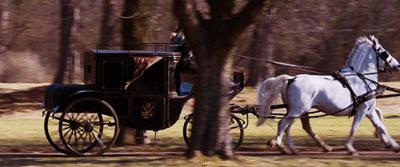

Bibliography:
Catherine Horwood, Gardening Women: Their Stories from 1600 to the Present, Virago Press Ltd, 2010
Linda Kelly, Holland House: A History of London's Most Celebrated Salon, I. B. Tauris, 2013
Quotations:
1 - Linda Kelly, Holland House: A History of London's Most Celebrated Salon, I. B. Tauris, 2013, pag. 24


